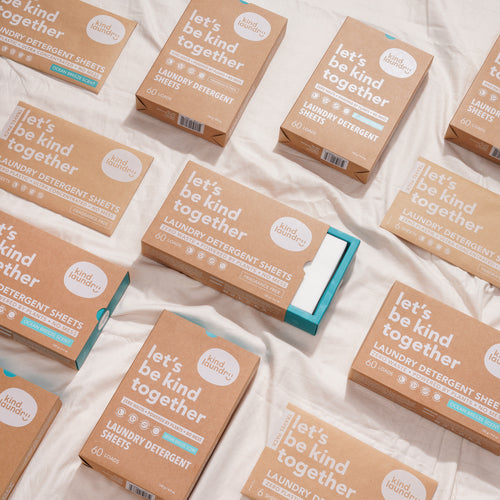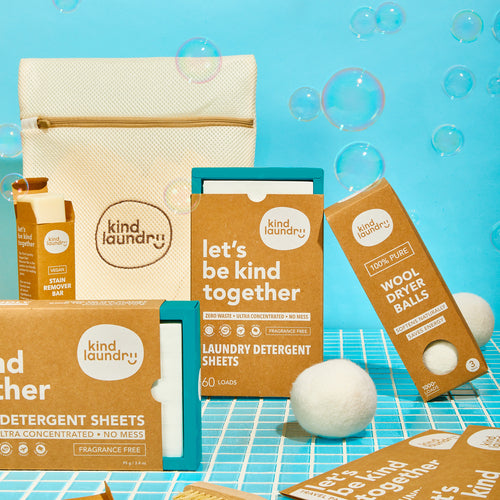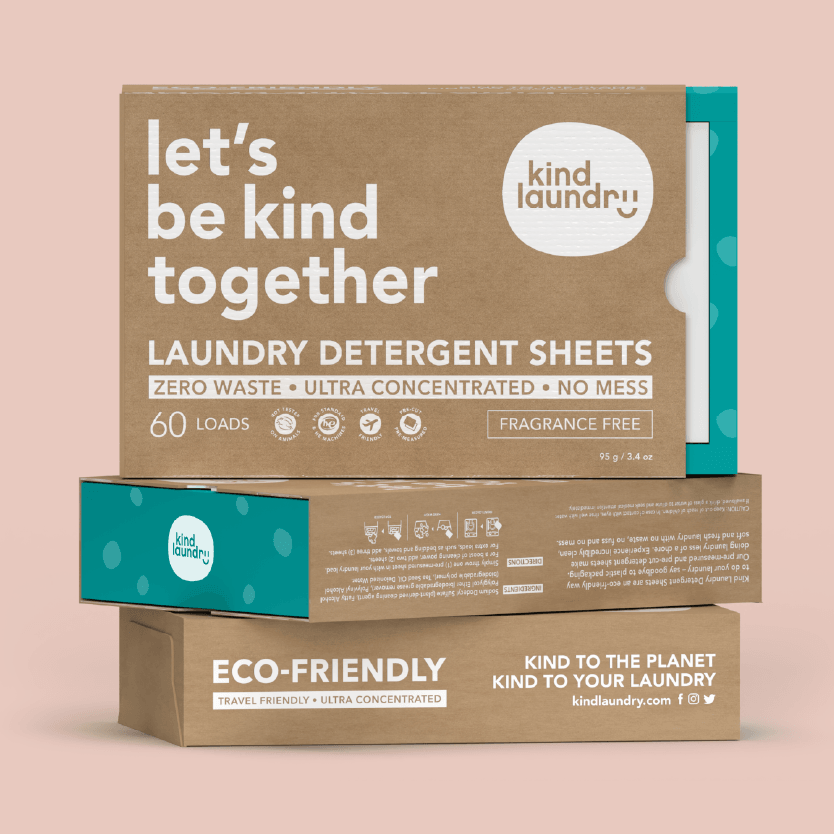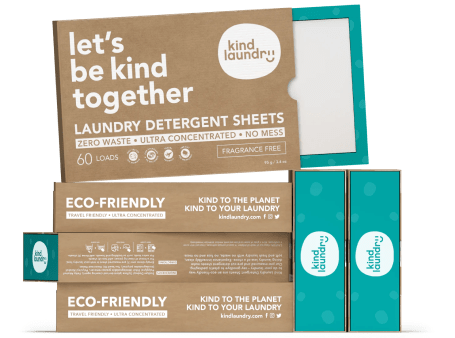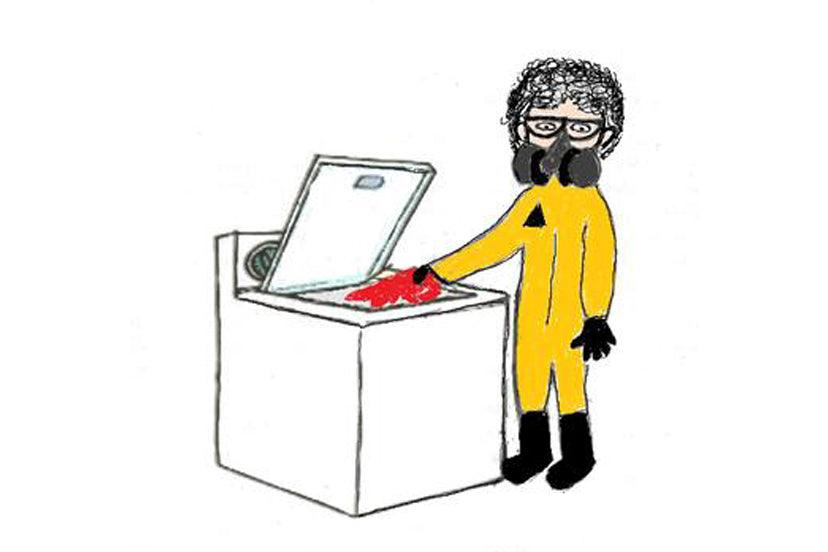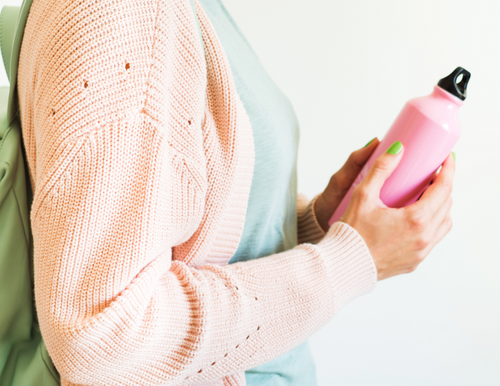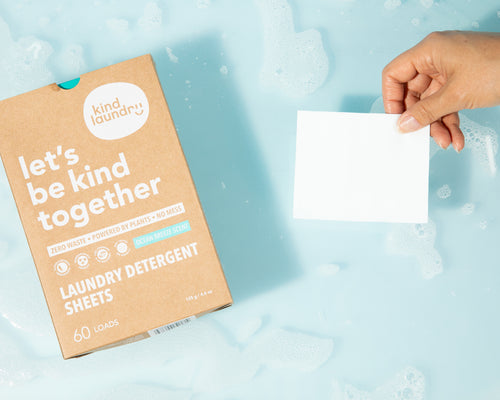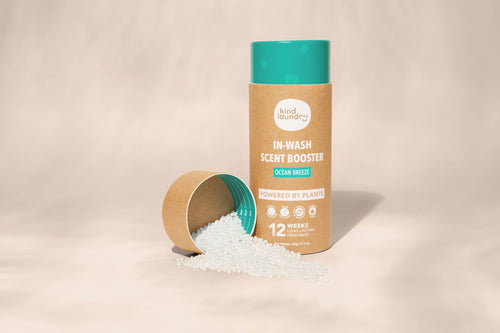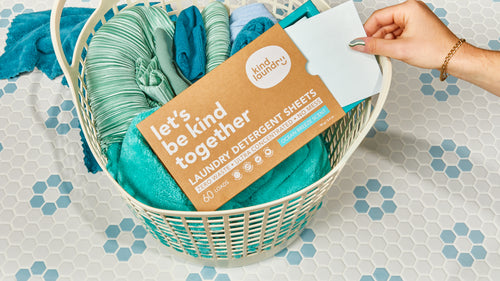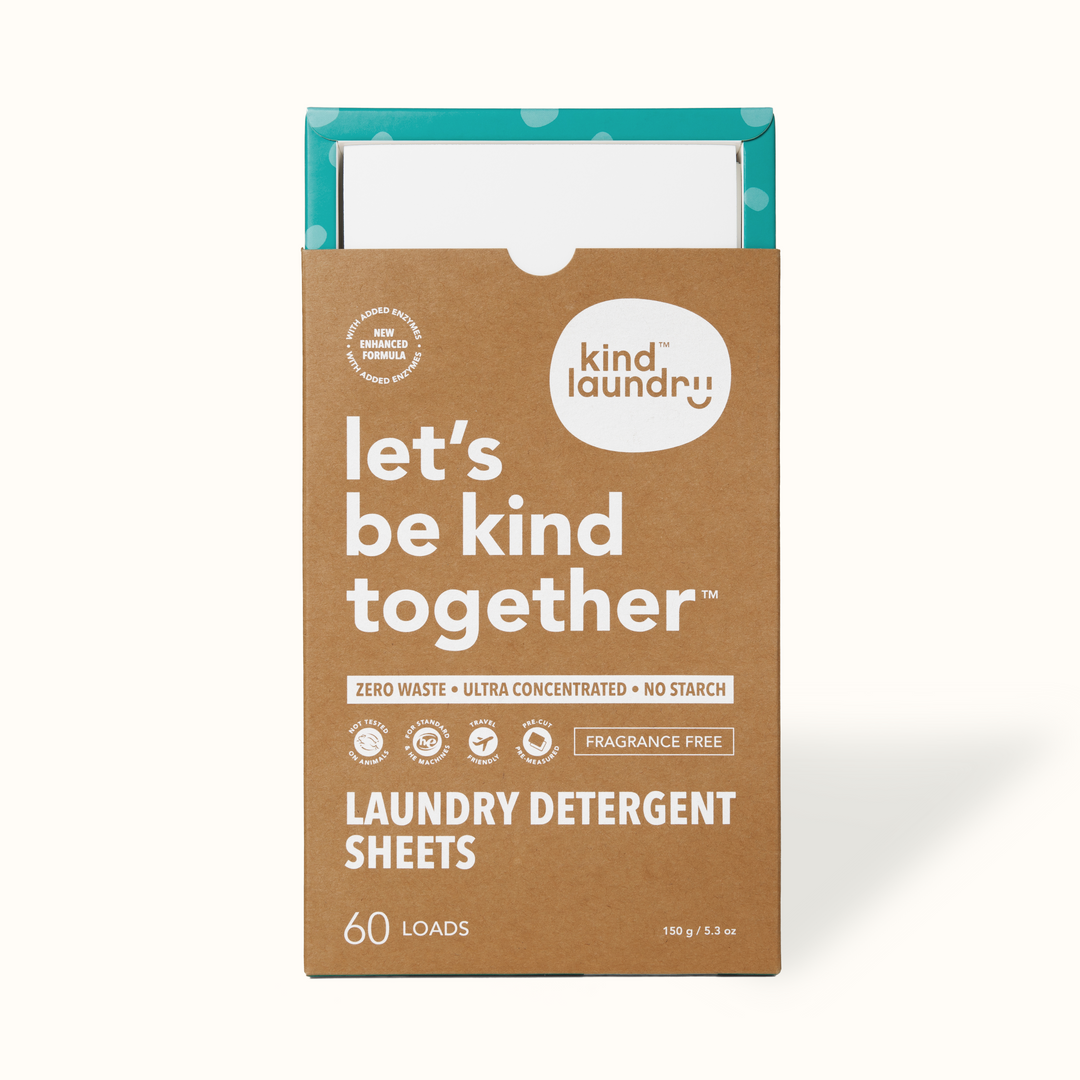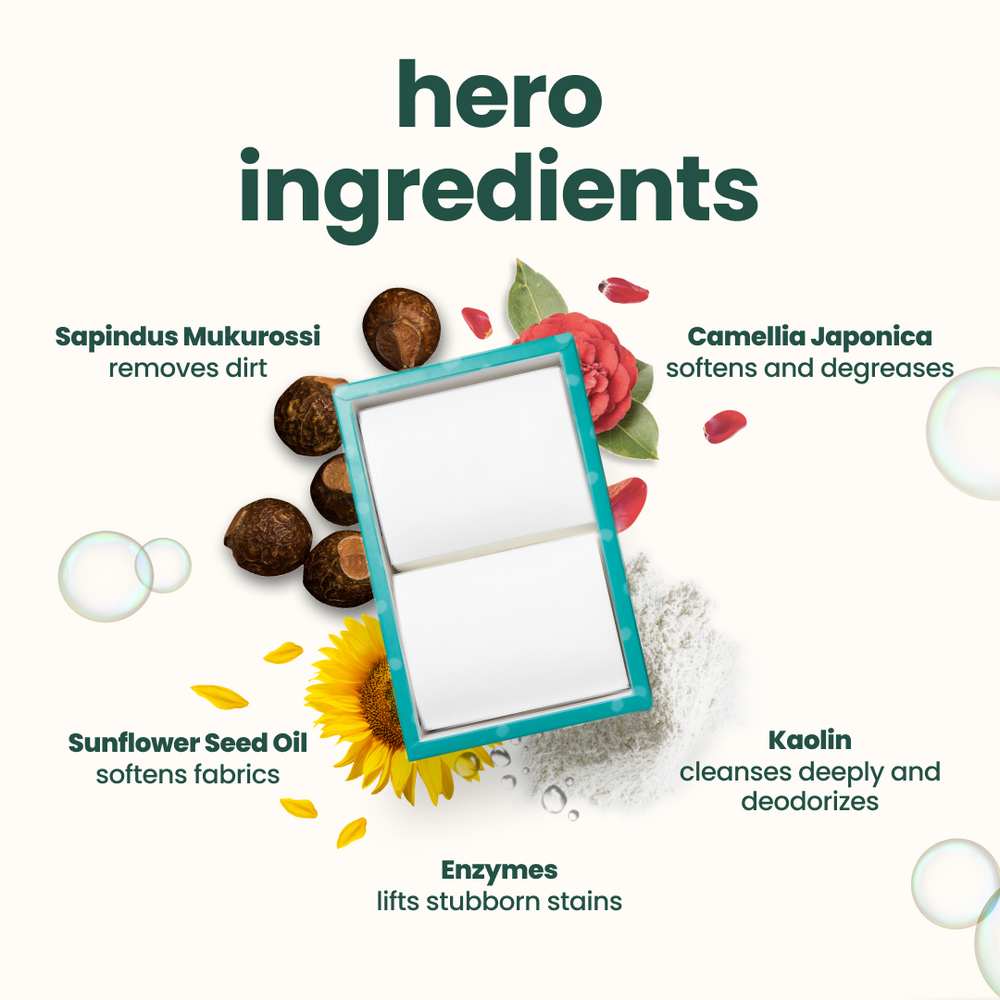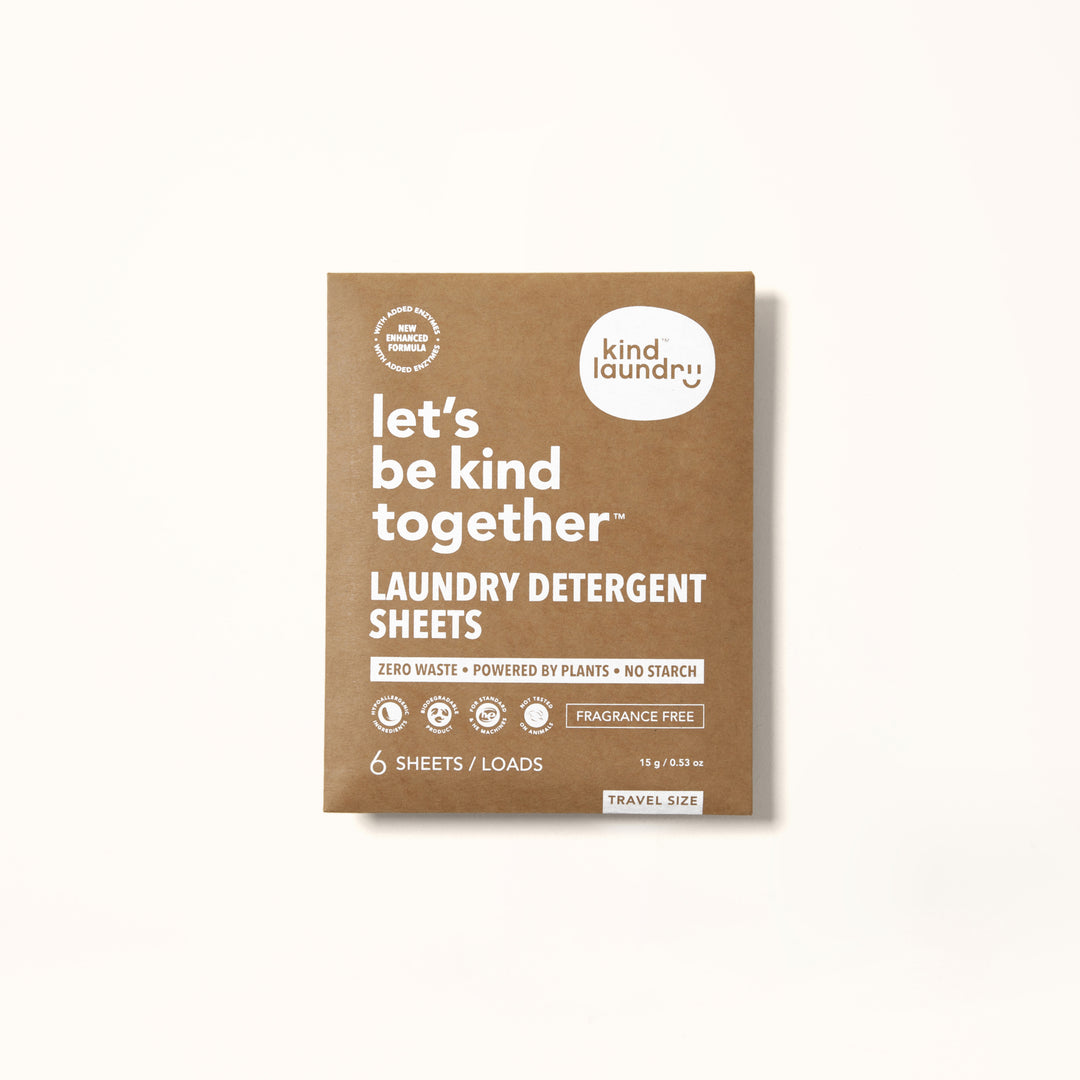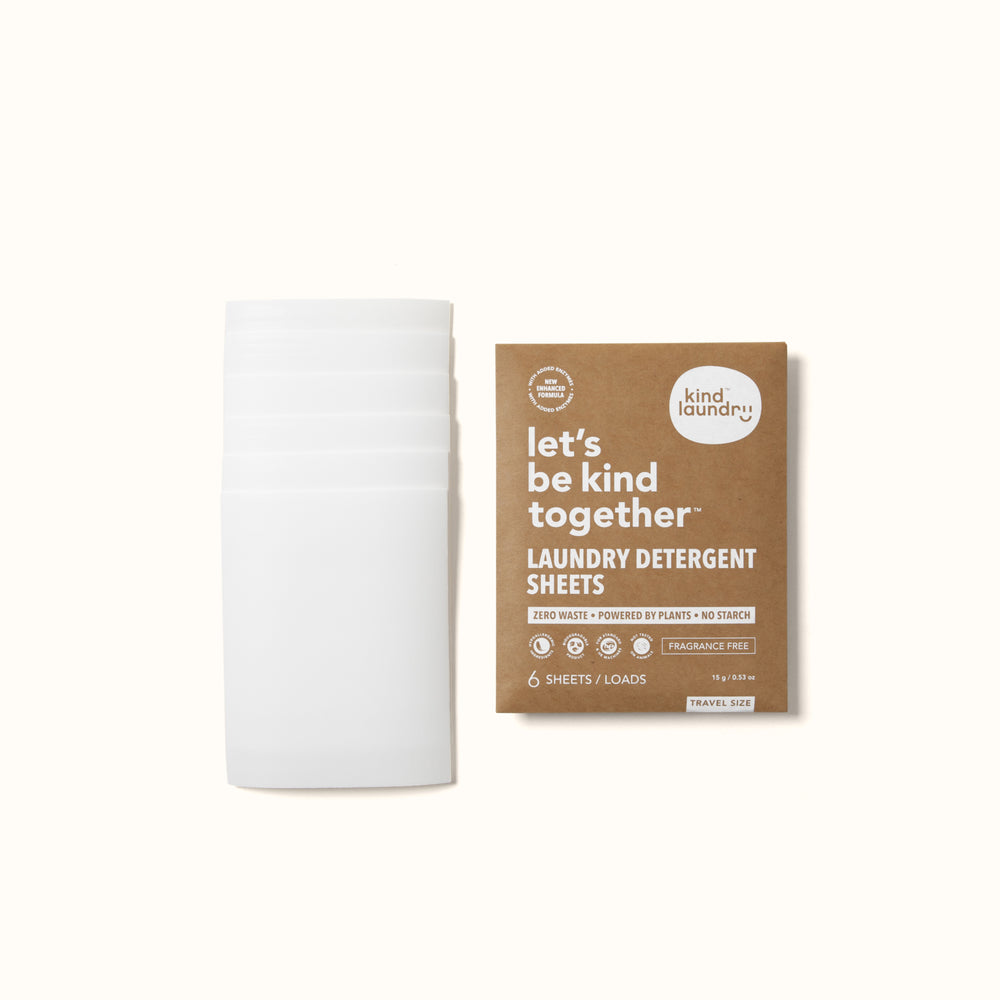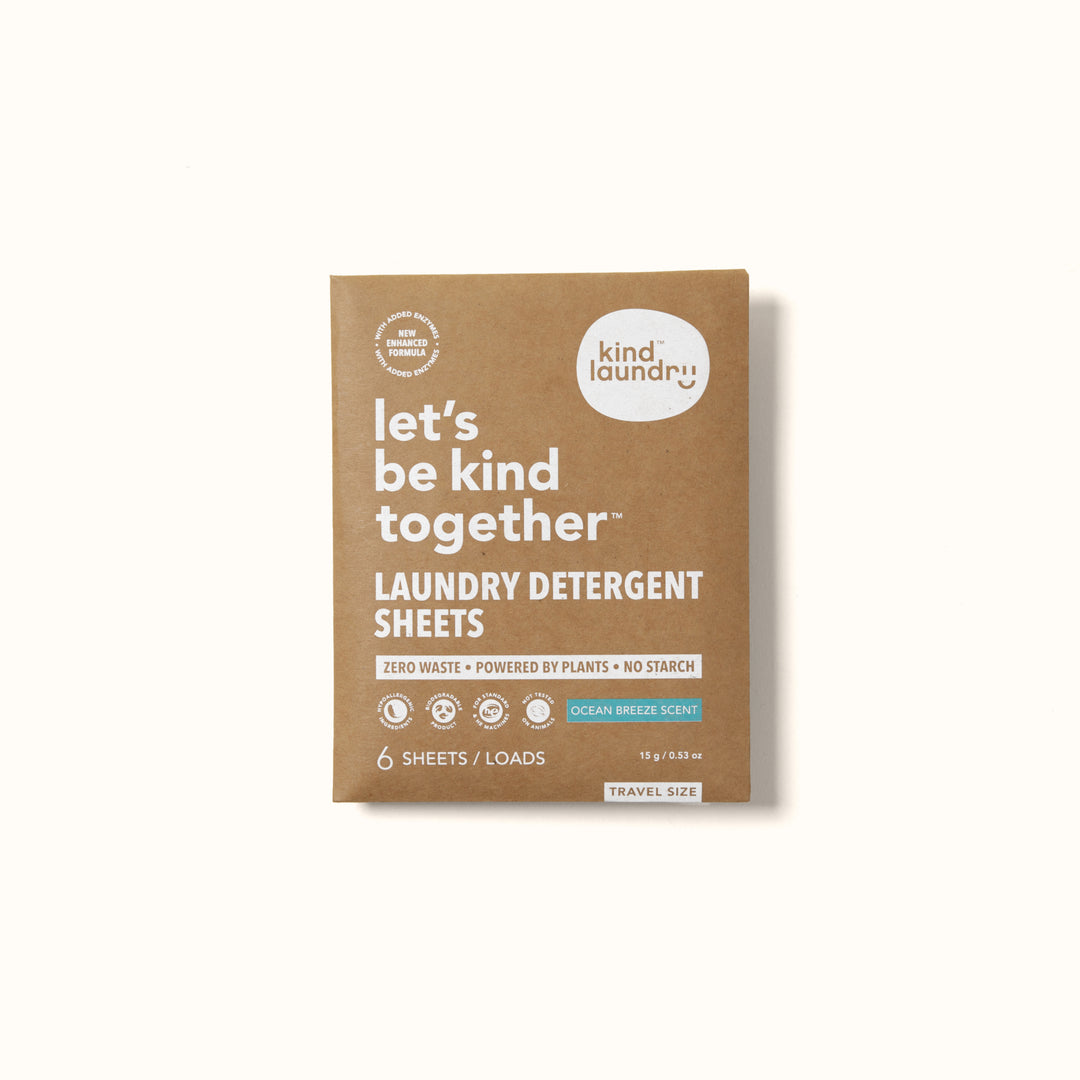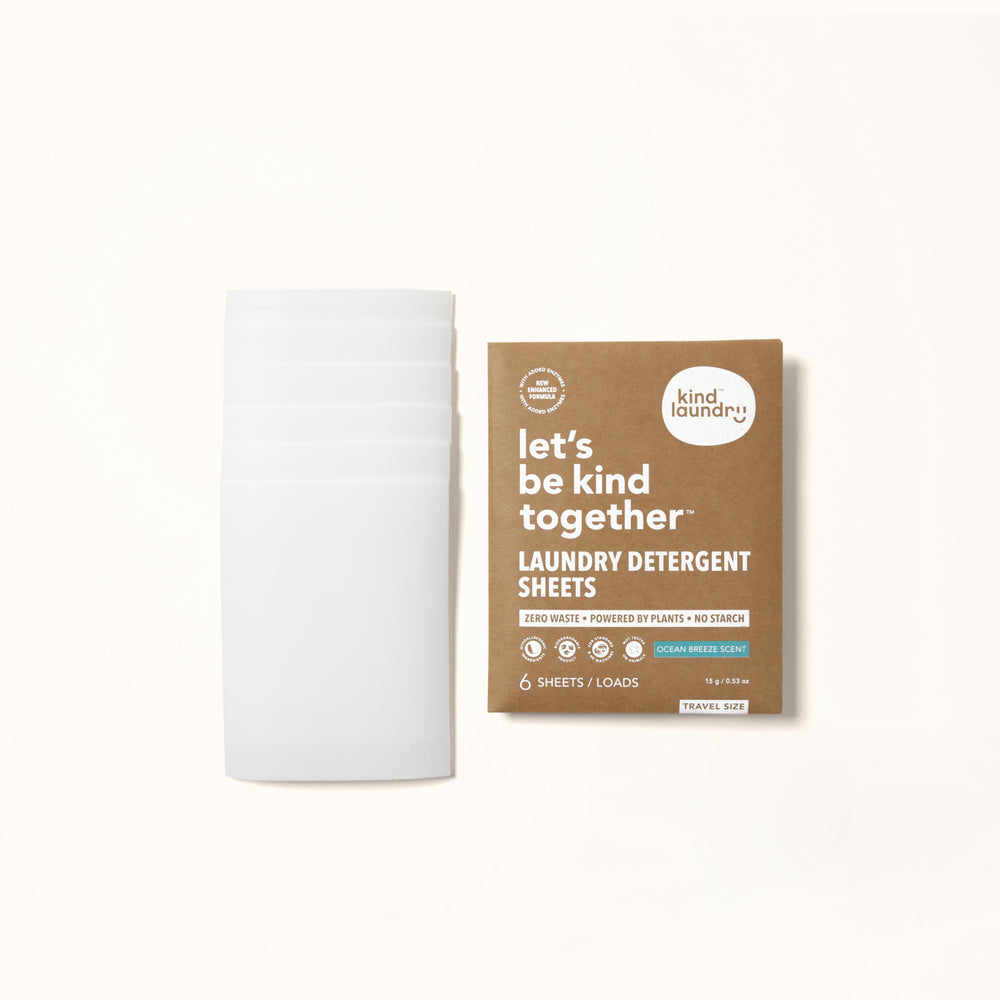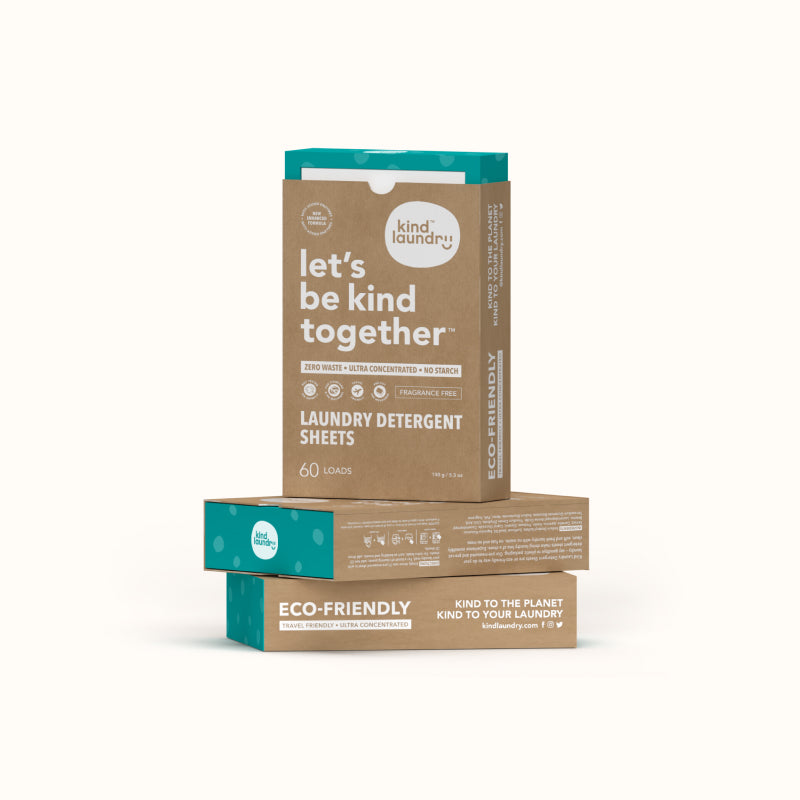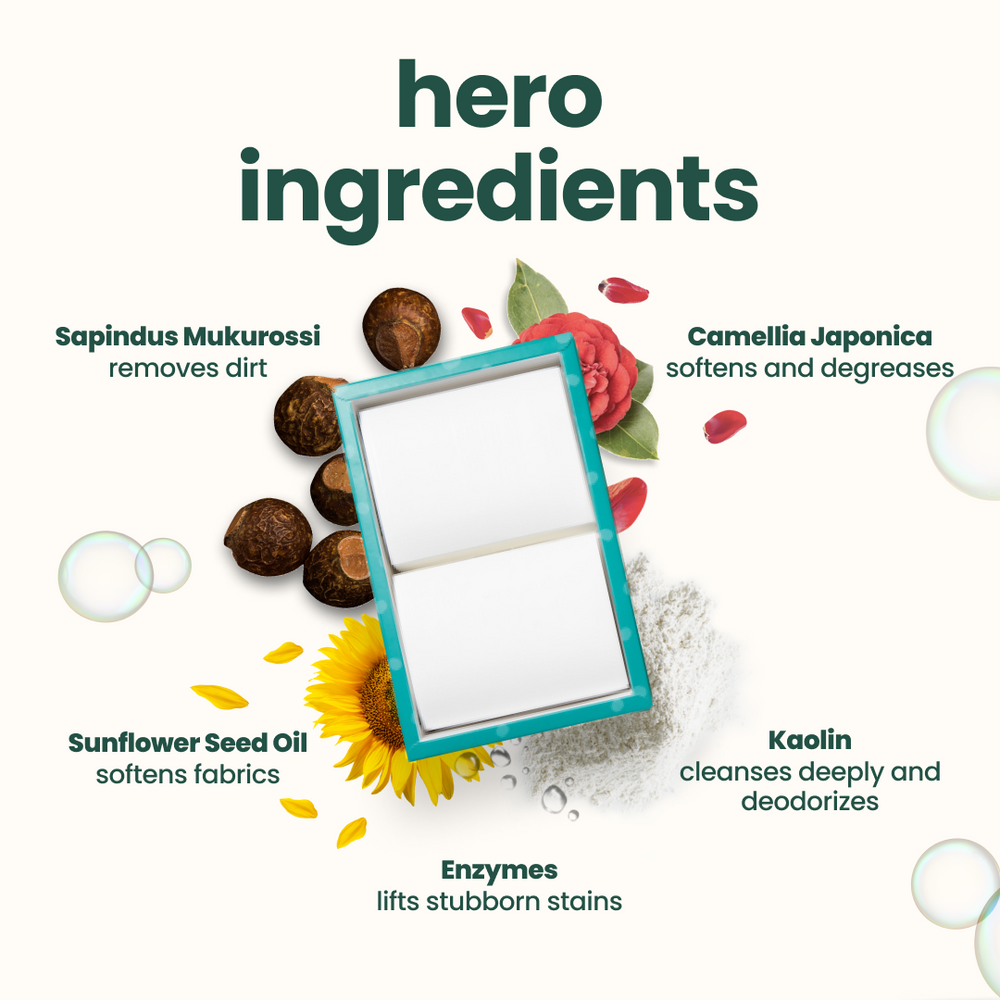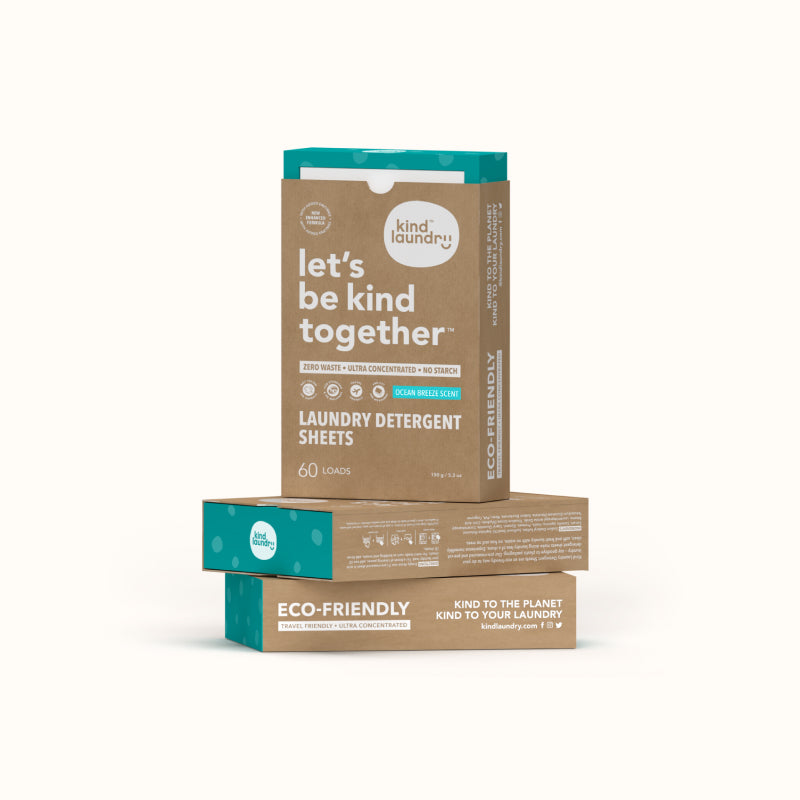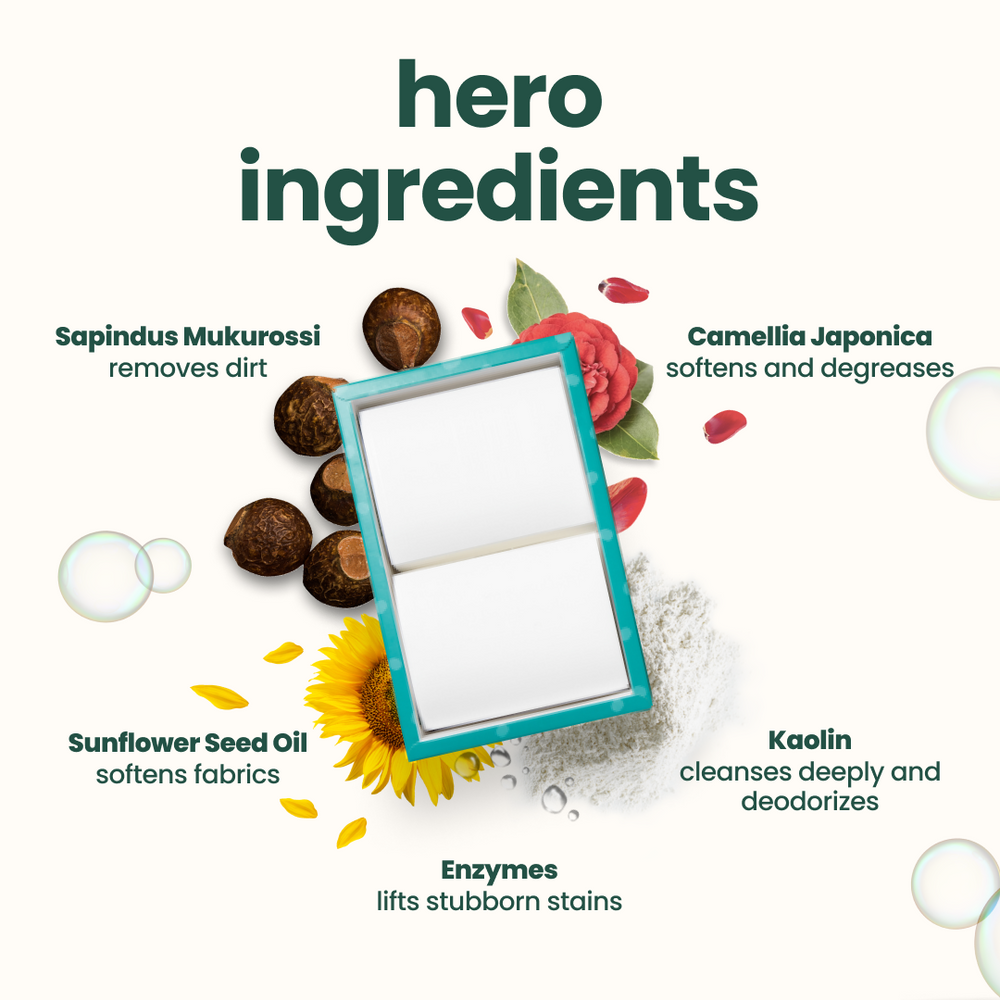Laundry detergent is an inevitable, necessary and inescapable part of life. Whether you’re a household of 1 or 10, laundry detergent is essential. If you’re anything like me, you probably haven't given much thought to which detergent you choose.
Most of us have never really looked beyond the marketed cleaning power, fragrance and price. But if you’ve ever wondered whether your laundry detergent is toxic, here is the answer.
Is laundry detergent toxic?
Yes, most laundry detergents are toxic. Popular detergent options contain over 25 toxic chemicals, with many more trace toxicities left unlisted. Additionally, and perhaps most frighteningly, household chemicals, including toxic laundry detergents are one of the leading causes of accidental poisoning in children each year. Not to mention the millions of plastic bottles going into landfills each year.
Prior to the 1950s, most laundry detergents were made with soap. Pure soap made via saponification, a natural process involving lye and animals fats/oils - quite harmless overall. So what happened to the non-toxic laundry detergents? War. During the war these fats and oils became required elsewhere, leading to the creation of synthetic alternatives. These synthetic laundry detergents derived from petro-chemicals leapt ahead in popularity. Since then the chemicals lurking in your laundry detergents have only gotten more complex, dangerous and toxic.
So how toxic is laundry detergent? Does it really matter what is in it so long as our clothes are clean? Well, let's take a look at some of the most commonly found toxins in laundry detergents. This may surprise and alarm you.
Toxins in Laundry Detergent
Buzz words like whitening, brightening and enzyme powered all serve to capture our interest and our purchasing power. However, if we look beyond these words into what that actually means ingredients-wise, they become much less enticing.
The majority of laundry detergents are a veritable cocktail of chemical ingredients. The following are just some of the main toxins found in laundry detergent that are truly concerning:
- Phosphates - linked to cardiovascular (heart) disease as well as osteoporosis. These toxins are particularly damaging to the marine environment when dispersed in wastewater from your wash.
- Bleach - often used to brighten whites, its toxic fumes cause respiratory distress and on contact with skin and eyes it is able to cause caustic burns.
- Formaldehyde - A chemical usually associated with preservation of dead bodies. This toxic ingredient as classified by the EPA , is a class B1 probable carcinogen. This means it has been linked with an increased risk of cancer.
- Ammonium Sulfate and Ammonium Quaternary Sanitizers - harsh cleansing agents that are corrosive and toxic. They can cause eye, skin and lung damage even with minimal exposure.
- Dioxane (1,4 Dioxane/ Diethylene Dioxide/ Diethylene Ether/ Dioxan) is quite possibly one of the worst additives. Dioxane is also a carcinogen and has been known to pose a combustion risk. Exposure to this toxin can damage your kidneys, lungs, central nervous system, eyes, skin and respiratory function.
Along with the toxins listed above there are also dyes, fragrances and brighteners that don’t really brighten fabric, they just hide stains under residue left on the clothing. Often there are trace elements of even worse chemicals left unlisted. It is a marvel that laundry detergent is permitted to be sold at all, given what toxins are in it. What seems a harmless box of suds on the laundry shelf is silently damaging both your health and the environment.
Dangers of The Laundry Detergent Toxicity
It’s tempting to think that as long as our laundry goes through a proper rinse cycle, that these harsh, toxic chemicals are washed away along with the dirt. In reality, much of the chemical compounds bond to the fabric and linger. Ever noticed how fragrant your laundry is when in the dryer? Yes, that means your washing detergent has scented your clothes, but it also indicates how much of the product is left behind. Once in the dryer, those toxins vent into the air you breathe and settle all over your home. If you vent your dryer outside, you’re sharing all that toxic air with your neighbors and the environment.
The residues are also able to rub off on your skin. This can lead to skin inflammation, eczema, dermatitis, itching and more. Laundry detergent toxicity can also be linked to allergic reactions, headaches, dizziness and a host of medical issues. Around 70% of your favorite liquid detergent is water, the remaining 30% is harsh chemicals and cleansers. This means that your well-intentioned use of extra detergent in a wash doesn’t mean cleaner clothes - just more exposure to chemicals and toxins.
While warning labels on packing usually only refer to the risks posed by ingestion of the substance, it's worth noting that only around 10% of health issues are a result of ingestion. The other 90% are caused by consistent inhalation of particles, vapors and skin contact.
Impact on Aquatic Life
Aside from the frankly horrifying impact of the laundry detergent toxicity on our own personal health, there are far-reaching consequences for the environment also. Phosphate nutrient loading is one of the biggest issues created by laundry detergents getting into our waterways. High phosphate detergents are known to create algal blooms which then take up the majority of the oxygen. This lack of oxygen makes it impossible for aquatic life to survive, let alone thrive. When the oxygen depletion continues over a period of time, entire aquatic ecosystems begin to die off.
Additionally, the surfactants found in laundry detergents are highly toxic to aquatic life and organisms. Surfactants work to interrupt the surface tension of oil and water to allow them to mix and wash dirt away. Highly effective in cleaning clothes, but deadly to marine life. When these toxins wash into our waterways, the overall surface tension of the water is reduced, making it easier for the body of water to absorb other pollutants in the atmosphere. Your choice of laundry detergent and its impact goes well beyond just that wash.
Alternative to The Toxic Laundry Detergent

Making more health-friendly eco-friendly choices with your detergent is a really simple step. Start by choosing laundry detergent that is non-toxic, biological and plant-based. Kind Laundry detergent is just that - kind to your family, clothing and the environment it contains just 4 natural ingredients. With these non-toxic ingredients that won’t leave residue on your clothes or machine, this fully biodegradable detergent is the easy answer to ditching toxic laundry detergent options.
Consider making the switch, for yourself, your family and the environment. It’s easier than you imagine.
